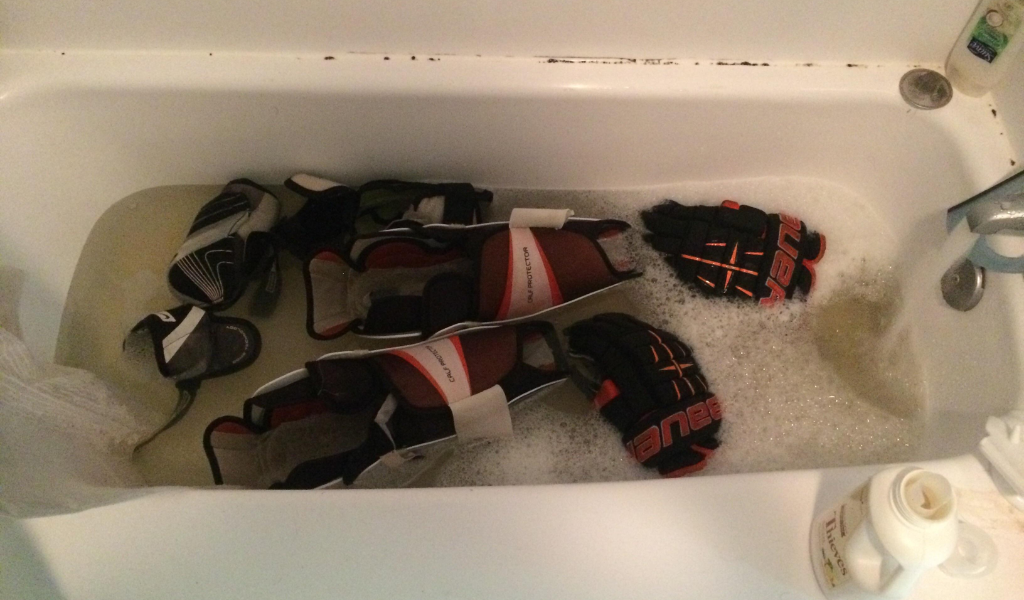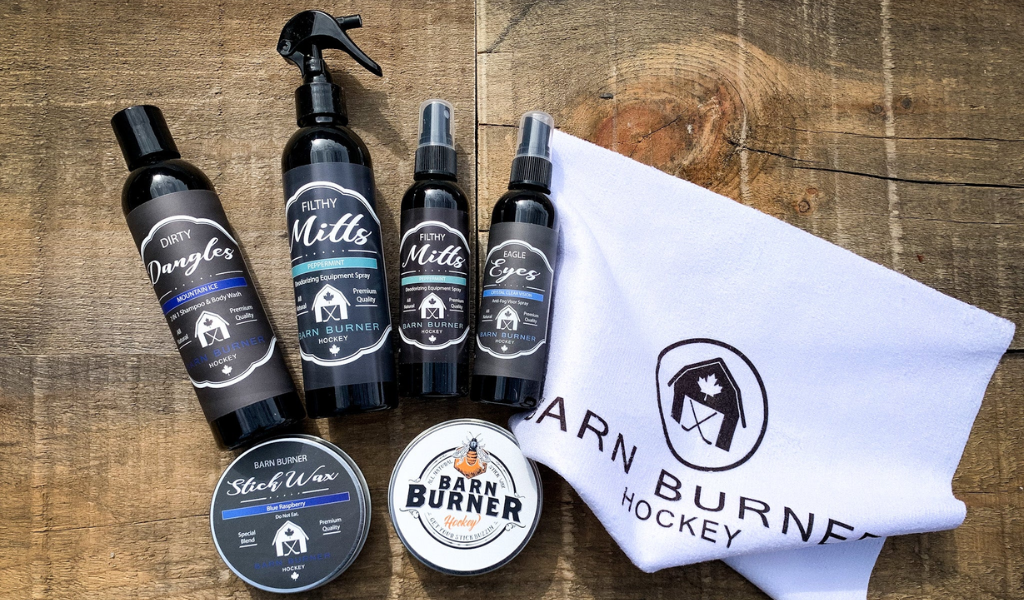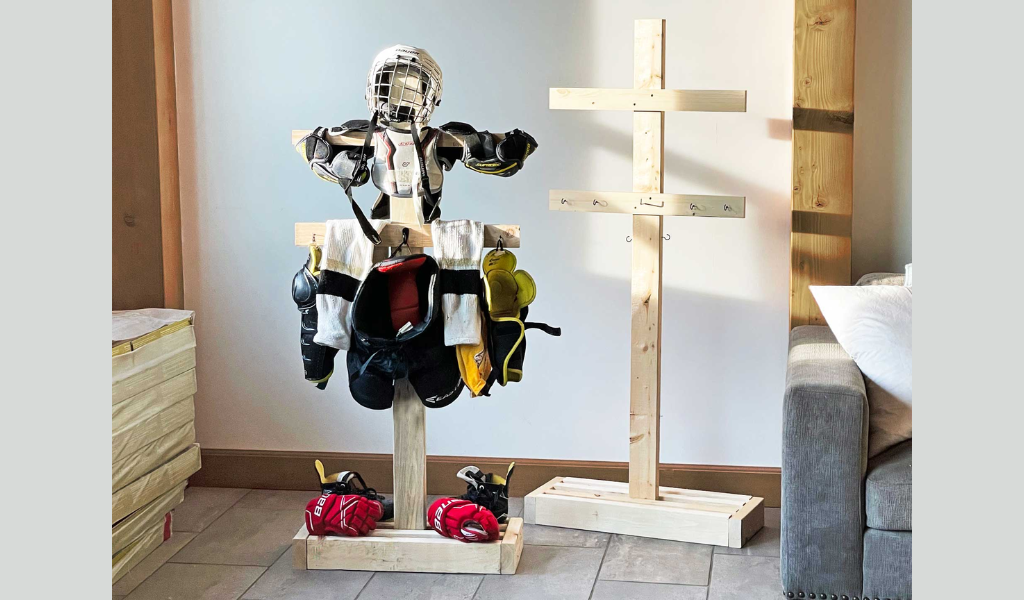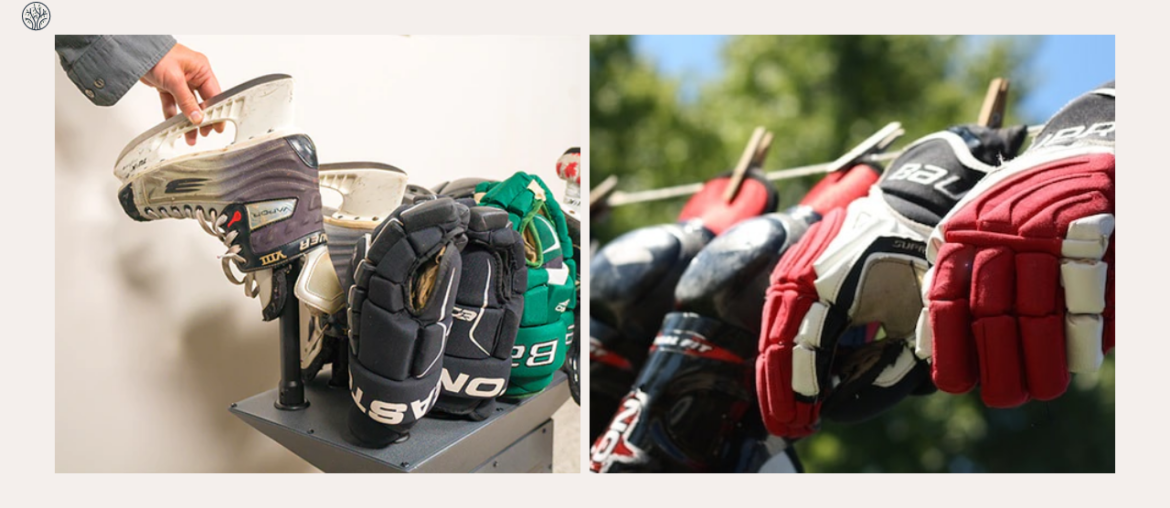Dedicated hockey players know their gear takes quite a beating on the ice. Over time, the sweat, grime, and odor can become unpleasant companions. But don’t worry! This article will reveal how to wash hockey gear properly.
Let’s start and discover tips to keep your equipment in great shape!
How Often Should Hockey Gear Be Washed?
The answer to this question depends on how often you play hockey and how much you sweat. A general rule of thumb is to wash your hockey gear at least once a month. This duration helps prevent bacteria, mold, and odor from building up and damaging your gear. It also keeps your equipment comfortable and safe to wear.
However, some parts of your hockey gear may need more frequent washing than others. For example, you should wash your hockey jerseys after every game or practice. Also, wipe down your gloves, helmet, and skates with a damp cloth or disinfectant spray after every use.
Best Ways To Clean Hockey Gear
There are different ways to clean hockey gear depending on the type of gear and the material it is made of.
First of all, check the manufacturer’s instructions before cleaning. Some products may have special care instructions or warnings that you need to follow.
For example, some products are not machine washable or dryer safe. Some require cold water or a gentle cycle only. Meanwhile, others may have removable parts that need you to clean them separately. Remember to follow the manufacturer’s instructions to avoid damaging your gear or voiding the warranty.
After this, you must choose a suitable cleaning method for each gear. Refer to our guidelines for the best results:
With Soft Gear
Soft gear refers to items that are made of fabric, such as socks, jerseys, base layers, and hockey bags.
The most-searched question is: Can you wash hockey gloves? Yes. There are two cleaning options you should try:
Machine Washing: While it’s clear that helmets and skates should never go into a washing machine, you can still clean removable linings, socks, soft pads, jerseys, gloves, and other flexible gear in there. Just make sure to take some precautions:
1. Choose a suitable wash cycle to keep the spin speed low because the pads can get heavy when soaked.
2. Clip together buckles and fasten Velcro to prevent them from damaging softer clothing.
3. Use cold water to prevent colors from bleeding and shrinking.

Bath Method: For a safe and thorough clean of all your gear at once, try the bath method:
1. Fill the tub halfway with cool water.
2. Add half a cup of laundry detergent without bleach.
3. Let your gear soak for about 30 minutes, then give it a good rinse.
4. While rinsing, tackle tougher stains with a sponge and some gentle scrubbing.
Avoid using bleach or chlorine-based products, as they can harm the fabric and stitching, causing discoloration and damage.
With Solid Gear
Solid gear are items that are made of hard materials, including hockey skates, sticks, helmets, and gloves. These items are usually not machine washable or dryer safe, but you can clean them by hand with a damp cloth or disinfectant spray.
Wipes: After choosing wipes that are antibacterial and safe for stencils, here is how to wash hockey gear:
1. Use wet wipes to clean the solid shells of your skates and helmet gently.
2. Give the inside of your helmet and skate shell a wipe-down for a fresh feel.
3. Wipes the solid pads and the straps that secure them. Adding a bit of disinfectant to the wipe can enhance the cleaning.

Sprays: Deodorant sprays designed for helmets or shoes are perfect for refreshing your hockey gear. These sprays have two great functions: they help eliminate bacteria and make your tools smell good. It is a great way to keep your favorite hockey equipment clean and hygienic.
Dishwasher (for small pieces): While not suitable for all gear, the dishwasher can be handy for cleaning small components. Be cautious not to use dishwashing tabs or other types of soap, as they can damage both your gear and the dishwasher. Select a dishwasher setting with a high temperature but no steam. After the cycle is complete, remove the gear and proceed with the drying method guided below.
With Goalie Gear
Goalie gear is protective gear, elbow pads, shin guards, etc. These items often have multiple layers designed to absorb impacts. When these layers get wet, the glue holding them together can weaken or separate.
It’s best to use a sponge or damp cloth for cleaning instead of fully immersing them in water to keep them in good shape.
Your goalie mask may have your team’s logo, so using a dishwasher could potentially damage it. Instead, remove any inner sweat lining and clean it gently. You can easily wipe down the solid part of the mask with disinfectant to keep your gear clean and fresh.
Dry After Cleaning

As mentioned above, drying hockey equipment properly is essential to keep it fresh and ready for the next game. Moisture is the leading cause of bacteria and odor growth in your gear. Therefore, you should always dry your gear entirely after washing it.
A good dryer helps get rid of funky smell from your gear effectively. There are a few options:
- Use a common clothes dryer on low heat to dry most of your equipment.
- If you prefer air-drying, just leave your gear out in a warm, dry place after rinsing off the soap. Our tip to speed up the process is to pat your stuff dry with towels.
- Consider special dryers made for boots and helmets. Some even have an air hose to stick inside your helmet or skate to absorb moisture. Others come with drying racks and a tent to create a drying zone. It is a quick way to dry your gear without harming or shrinking anything.
See more: Is Fanatics Legit? What You Need To Know
Tips To Prevent Hockey Gear Odor
Through this article, you’ve learned how to wash hockey gear step-by-step. However, besides washing, you also need to take some preventive measures to keep your equipment from smelling bad in the first place. Here are some tips to prevent hockey gear odor:
- Proper Storage: Never store your gear in a closed bag or a damp locker. This action traps moisture and creates an ideal environment for bacteria and odor to thrive. Store your gear in well-ventilated places like a garage, basement, or balcony. Avoid direct sunlight or heat sources that might damage your equipment.
- Deodorize Your Gear: Apply baking soda to your pads and pants before washing. Then, bathe your socks and jerseys in white vinegar or lemon juice, and spray tea tree oil on your helmet and gloves. Commercial products like sprays, powders, or inserts for deodorizing hockey gear are also good options.
- Wear Base Layers: Consider wearing a base layer between yourself and your equipment. They will wick away moisture from your body and equipment, creating a fence against odor and bacteria.
- Dry It Out: Remove all gear from your bag immediately after practice or a game. Wipe it down with disinfecting spray or wipes, and leave it open to air out and dry thoroughly. Place your gear in a warm, well-ventilated space to dry faster.
By following these tips, you can ensure your gear stays new, clean, and free from unpleasant odors and harmful bacteria.
Time To Clean!
Hockey is fun and exciting but also a sweaty and smelly sport that requires a lot of cleaning. Follow our advice on how to wash hockey gear to keep it clean and like new. Each piece of equipment requires a different cleaning way and cycle, so take note of everything we have shared with you.
We hope this article has helped you answer all your queries and get ready for some exciting gameplay. So, go out there and have a blast playing hockey!





